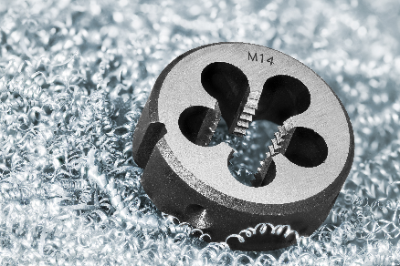What Is a Round Die for Threading?

A round die, commonly referred to as a dice, is a tool utilized for cutting threads. It features cutting blades in the grooves of a tool designed to cut male threads.
While the formal name is “round die for threading,” variations include angular dies, spiral dies, and dies for tapered pipe threads. Unlike taps, which are used for processing male threads, dies are essential for crafting female threads.
This tool is primarily used for threading the external surfaces of various metal round bars and is integral in manufacturing bolts and small screws.
Historically, taps and dies were used in roughly equal quantities. However, current trends show a dramatic decrease in die usage, with a ratio of approximately 1 to 2 dies for every 100 taps. This decline is attributed to the exclusive use of taps for processing internal male threads, while various methods exist for cutting external threads, including the use of dies.
- Lathe cutting
- Thread rolling with round or flat dies
- Thread grinding machines with grinding stones
Uses of Round Dies
Dies can be manually operated by fitting handles and cutting threads while turning. They are also compatible with automatic lathes, machining centers, and engine lathes.
There are two primary types of dies: solid and adjustable. Adjustable dies may have an adjusting screw for size modification or use a wedge for dimensional adjustments. However, dies without adjusting screws can present challenges in maintaining thread cutting stability and accuracy.
Previously, skillfully adjusting adjustable dies to achieve precise thread cutting was a hallmark of expert craftsmanship. Nowadays, such craftsmen are increasingly rare, and using solid dies in machine threading often results in more consistent thread accuracy due to reduced friction.
Principles of Round Dies
When employing dies for threading, they are mounted onto holders or handles. There is no explicit basis for the numerical values of outer diameter and thickness concerning the nominal size.
Although the combination of outer diameter and thickness is consistent across thread types, solid dies for tapered pipe threads are an exception. For these, the thickness required to meet the predetermined lengths from the pipe end to the reference diameter and the effective thread portion differs from the standard thickness concerning the outer diameter for parallel threads.